
Sometimes it can be hard to find and identify all the organisms recruited on an ARM. Here Dave Kushner measures a tiny little scallop.
Once again, dawn found me driving along on the Pacific Coast Highway, the back of my car full of gear. Like many countless mornings before, I was headed to another port, some place on the map held a ship that would take me out on the ocean. About 70 miles off the coast from the chaos of Los Angeles, CA, the Channel Islands National Park (CHIS) comprises 5 of the 8 Channel Islands. An extension of the Santa Monica Mountain Range, the Channel Islands rise out of the Pacific Ocean to block inclement weather heading towards the populated coast.
Having grown up in Los Angeles, I have always been captivated by the mysterious apparitions visible only the clearest of days. The Channel Islands represent a California that once was, but will never be again. It has always been a dream of mine to dive into the kelp forest around the islands, and now I would finally get my chance.
After making it to the CHIS annex, where I met the field crew I would be accompanying for the week, we immediately began loading gear and food onto the boat for the week. For 6 months out of the year the Park Service’s marine ecologists and technicians embark on 11 5-day long research cruises to the remote islands. Their job is to add an incredible amount of data to an Inventory and Monitoring (I&M) project 34 years in the making. While my background is in kelp forest ecology, I knew I would have my work cut out for me.
After steaming out to Santa Rosa Island, we wasted no time in assess the first site we would be sampling. The Kelp Forest Monitoring project, or KFM, has 33 sites they must visit every season, and when you factor in potential weather issues, that doesn’t leave much leeway in terms of sampling each site. Dive teams identify and count fish, invertebrates and algae, and even quantify substrate. After dropping anchor the first team of divers hit the water immediately to lay out the baseline 100-meter tape and to film the site before the rest of the team gets down.

One of the many tasks associated with each site is the RPC, or Random Point Counts. Every meter, along the 100meter baseline, 6 random points along the bottom are taken. To simplify things, a diver with a surface-supplied air and a 2-way communicator “walks” along the baseline, calling off all 600 points!
From there, each buddy pair has a specific set of tasks to complete before a site can be checked off for the season. If conditions, both abiotic and biotic, cooperate, then a site can be completed in about 3 or 4 hour long dives. The Inventory and Monitoring data that the KFM team collects is extensive. Some divers place 1m2 quadrats at regular intervals along the baseline and count every organism found within, while others take band transects perpendicular to the baseline and count another slew of organisms. Because I was only there for a week I had the relatively easy job of counting every giant kelp plant found along the baseline (within 10 meters of the tape and only plants 1 meter tall or taller) and counting their stipes (like the stems on a plant).

Without these incredible algae, we wouldn’t have vast underwater forests. Juvenile giant kelp must settle on a hard bottom if they ever hope to grow into giants.
However, one of the most fun samples techniques we employed was my personal favorite, the roving diver fish count. Usually before substrate data is taken, buddy pairs swim the 100m transect, and out 10 m on each side of the transect, counting every fish on the substrate, in the canopy and the midwater. That’s 2000m2 and the water column Not only do you have to count the fish, you also have to identify (ID) them. There are several indicator species that the team specifically looks for, but because everyone swims the transect (but starts at different parts), there is definitely a competition to see who can ID the most fish. Oh, and you only have 30 minute to swim the whole 2000m! So you’d better swim, count, ID and record fast if you want to get your numbers even close to a seasoned KFM divers counts.

A diver on surface supplied air with a two way communicator in his face mask steps off the Sea Ranger II to sample the bottom. Notice the hoses running form his back, and the reel off behind him.
Our first day and the next morning we wrapped up our site on Santa Rosa Island. The visibility wasn’t great, and the site wasn’t the most glamorous, but I felt like I was being welcomed home to my old life as a kelp forest technician. However, the highlight of the trip came on our midday steam from Santa Rosa to San Miguel. In the foggy afternoon haze our captain spotted a dorsal fin sticking up out of the water. The team had spotted a small ~8ft great white shark the week before near Santa Barbara Island, so everyone got really excited (we kelp forest ecologists tend to hold white sharks in high esteem). But what our captain had seen was something even more rare. As we slowly approached the protuberance, it grew larger and larger. This was no white shark. We killed the engine and drifted close so we could get a positive ID. Even from afar we knew what we had stumbled upon; a basking shark! These shy and elusive open ocean fish feed on plankton. Like baleen whales they have massive jaws that open wide, allowing the slow moving sharks to swallow great mouthfuls of water. However, basking sharks were hunted to near extinction almost a century ago. This was the first shark seen by park biologist since 1991 and the two sharks observed that year were only several miles away.. This basking shark was huge 25ft long. It didn’t stay around us for too long, but did come and check out the boat on his way out. What an incredible experience! You can view some underwater video taken of this shark at https://www.facebook.com/channelislandsnps/videos/977368515647396/.

Most recreational divers tend to opt for warmer water with good visibility. Having been trained in the relative cold of California, I feel at home swimming through a kelp forest, in and amongst giants.
After the excitement of seeing the shark, we dropped anchor at our site on San Miguel Island. The weather patterns were strange, preventing us from sampling some sites while allowing us easy access to others. The site on San Miguel Island we sampled on our second day is usually buffeted by strong winds and large swell. Fortunately for us the water around Hare rock was dead calm that day. However, as we dropped down into the green murk it soon became evident why a basking shark was seen so close to the island. The water was a healthy shade of pea soup green due to a seemingly endless cloud of plankton! While swimming in murky water doesn’t exactly make for the best diving conditions, green is typically associated with a healthy and vibrant ecosystem. And that’s just what we saw at Hare Rock.
I’ve never before lived on a dive boat. Typically at the end of a long field day you get to go home, wash your gear and take a shower. Life on a research vessel takes on a similar routine, but your world is reduced to the deck, the galley, your bunk and any open space (which typically gets filled up fast). While some people might find these conditions to be claustrophobic, I had an absolute blast. When the scope of your world is narrowed to diving, eating and sleeping things become a little bit clearer.
- Nothing keeps a research team going better than a hot meal. Luckily for us, there was no shortage of food or appetites on the Sea Ranger II.
- My bunk for the trip, dubbed “the coffin”. I wasn’t able to sit up in my bunk, but I was still more than happy to crawl into my sleeping bag at the end of the day.
- A typical morning for the KFM crew; as we pulled up to a perspective dive site we evaluated the surface conditions until a decision was made.
- No biologist can bear to see trash in his or her study system! KFM technician Amanda Bird was particularly unimpressed to see a bunch of discarded balloons.
For the next three days we cruised to different dive spots, checking the conditions, sampling our sites and occasionally a team of divers would descend into the depths to switch out a wave meter or two. Fortunately most of our days were fairly short. Though on Thursday we had an extra long surface interval while waiting for the current to slack. During our first dive in the morning at Gull Island the kelp was standing relatively straight up, with the canopy splayed out on the surface. By the end of our second dive the kelp was leaning over, the canopy down 15ft below the surface. So we waited on deck, watching on the depth sounder as the kelp dropped lower and lower with increasing current. Sunburnt, and tired we occupied ourselves by napping, eating, or reading. Slowly the current began to slack later that afternoon. We anxiously watched the depth sounder, as the canopy started to rise. As the first kelp blades became visible we eagerly donned our gear and jumped back in the water to finish monitoring for the day.

The KFM always deploys a hang bar at 15ft with oxygen supplied from the surface. That way, as divers are off-gassing after a dive they have something to hang on to. The oxygen is for added safety. Here you can see the kelp laid over in the current, with the diver just above. Are you counting those fish?!
- Most divers in California are familiar with orange and brown cup corals, little solitary corals that cover rocks from the intertidal into kelp forests. However, few people get a chance to see Stylaster californicus, the lace coral. They are quite fragile, and tend to grow deeper than most recreational divers tend to dive. This site on Santa Cruz Island is the only place we saw them.
- A relatively rare, deep-water coral was found to be quite abundant at our site on Santa Cruz Island. Sampling these unique organisms is yet another task a KFM diver must add to their list.
- Related to corals and jellyfish, gorgonians are soft, branching colonial communities.
- While giant kelp alone is distracting, the true complexity of these ecosystems can be found in the nooks and crannies of the reef. In this image, a red sea urchin (right) shares the rock with a Hermissenda nudibranch, while lace coral (Stylaster) and clubbed tipped anemones (Corynactis) vie for space.
- Kelp rockfish, like this one sitting on the rocks usually hang out mid-water. During the roving diver fish count divers must count all the fish within the 2000m2 area, from the benthos to the canopy.
- Whoever said colorful reefs are found only in the tropics has clearly never been to the Channel Islands. Here orange and red cup corals share rocky outcroppings with brown bryozoans, purple algae, magenta tunicates and the always-stunning Hermissenda nudibranch (foreground).
On our last day we got to do something a little different. As part of I&M the KFM team has deployed ARMs, artificial recruitment modules, which are essentially a stack of cinderblocks held together via metal wire. However, they’ve proven to be an invaluable tool that the KFM uses to monitor the recruit of juvenile organisms to a kelp forest. Because the ARMs are encased, settling invertebrates, and occasionally a young fish, will take shelter in the 3-dimensional structure provided by the cinderblocks. Then, once a year the KFM will disassemble the ARM at a given site, underwater of course, and measure the individuals either at depth or back on the boat. Any organism removed from an ARM is promptly returned before too long. I promise, the sea urchins don’t mind. At our site on Anacapa Island we spent our first dive disassembling, sampling and reassembling the ARMs. After an extended surface interval counting and measuring the organisms we removed, we dropped back down to replace them and spent the rest of the dive exploring the natural beauty of our dive site. It was really refreshing to do a fun dive in a kelp forest after an aggressive week taking data all day long.

Dave Kushner, the lead KFM biologist, clears away algae before sampling the ARM. Photobomb credit to the lurking male California sheephead.
- After measuring all invertebrates growing inside the ARMS, the KFM team brings the more hearty invertebrates (mainly urchins back to the surface to measure.
- Once incredibly abundant, sea stars have all but vanished from the East Pacific. Over the last 3 years or so a wasting syndrome has all but eradicated these incredibly important organisms. But it appears as though they are making a comeback, as seen by this juvenile found in an ARM.
- With a ripping surface current we had to use references to swim to the bottom. Here my buddy is using the stern anchor line, while I opted for a greener descent line.
I really lucked during my week at CHIS. While the weather could have been a little more cooperative, the cloudy evenings and drizzly mornings showed off the islands in a dramatic light. It can’t all be sunshine and clear water. Also, I doubly lucked out with the weather because we got to dive at 4 of the 5 islands in the Park! Typically a research cruise is contained to one or two islands to reduce the time spent steaming in between. But I was really pleased to have been able to see a wider swath of the Park, and to compare sites across the islands.

Swimming through a kelp forest again, I couldn’t help but try to identify everything I recognized, even organisms not on the species list. I was especially distracted by the plethora of nudibranchs (sea slugs) covering the reef.
While it was definitely a blast to cruise around the Channel Islands, this I&M project is one of the largest and most strenuous within the Park Service. In 5 days we racked up 6202 minutes or 103 hours of bottom time! The data we gathered on our trip has been added to a much lager data set, which can be used by the public and researchers alike. Because of the dedication of the KFM team we have a very solid baseline understanding of kelp forest dynamics. The dataset has been sampled to show trends in oceanographic changes such as El Niño, natural history and ecosystem dynamics. Without programs like this we would have a poor understanding of these vital ecosystems.

Giant kelp is one of the fastest growing organisms on the planet. Growing at about 1m/day, giant kelp is the basis of an entire ecosystem.
I had an incredible time on the cruise, but by the time we hit the dock on Friday I was exhausted. I have to commend the 2015 KFM team for their dedication, unwavering optimism, charisma and their warmth with which they accepted me for the week. I’d like to give a big thank you to David Kushner, the guy in charge of this whole rodeo, Josh Sprague, Captain Keith Durran, Jaime McClain, Ben Grime, Michael Civiello, Amanda Bird, and Ashley Kidd. Now I get another day of R&R before heading up to the high alpine altitudes of Crater Lake, Oregon.
Thanks for reading!




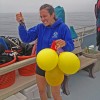
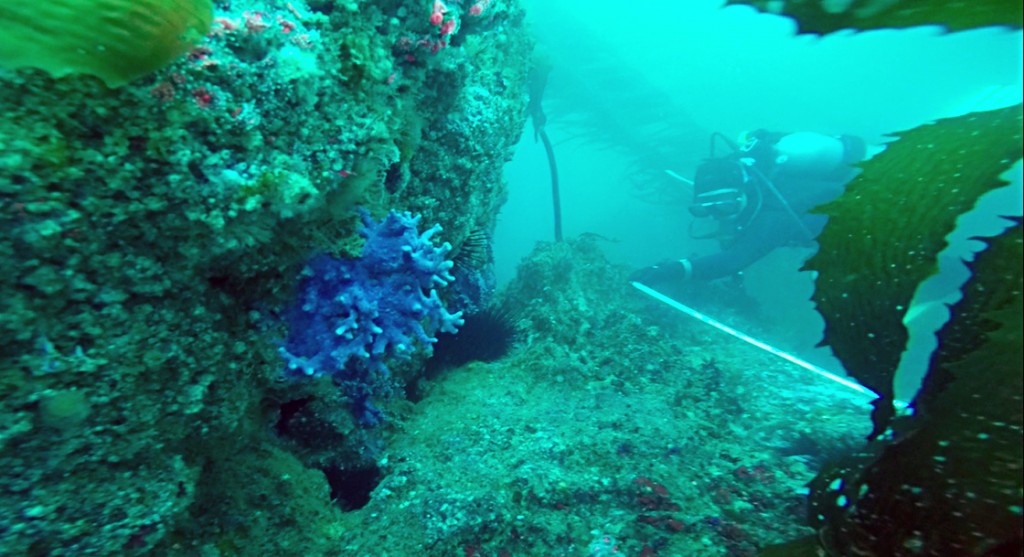
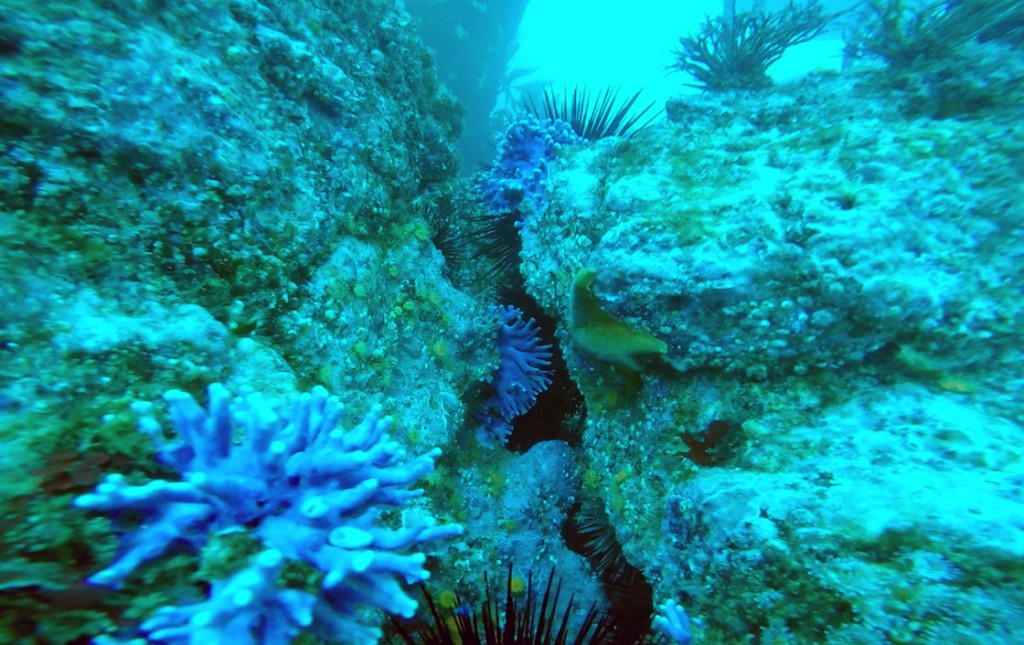
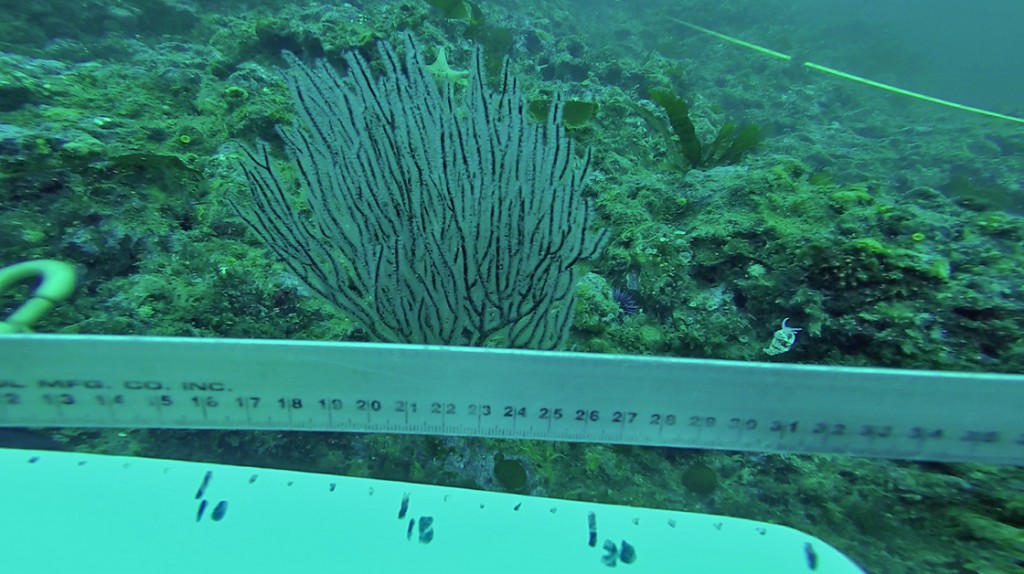
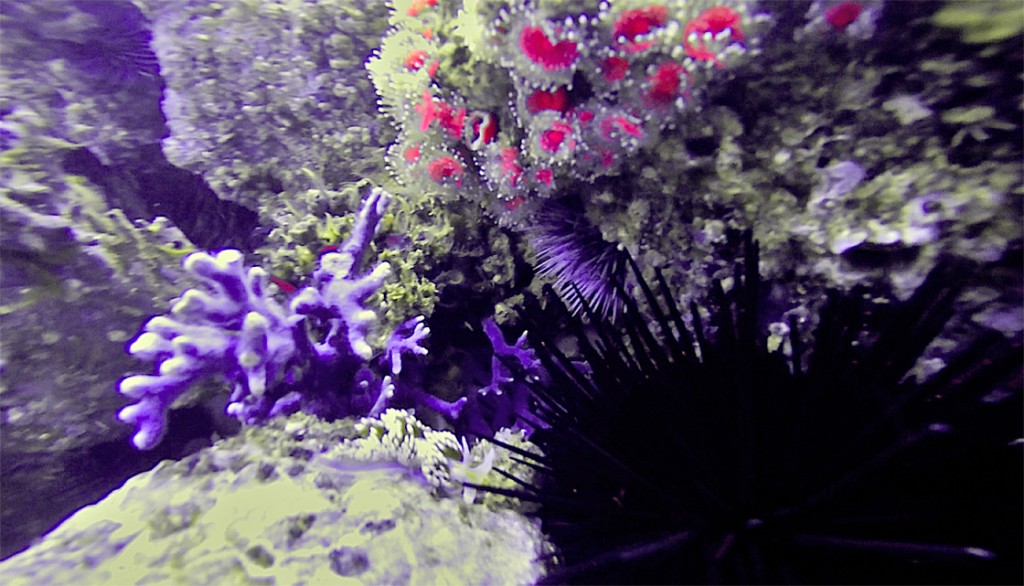
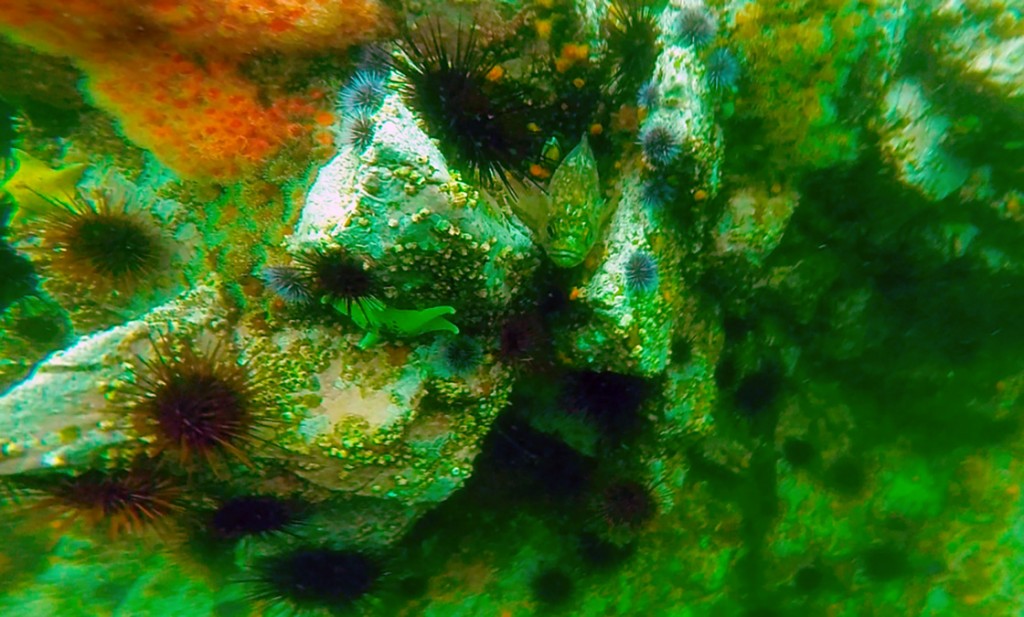
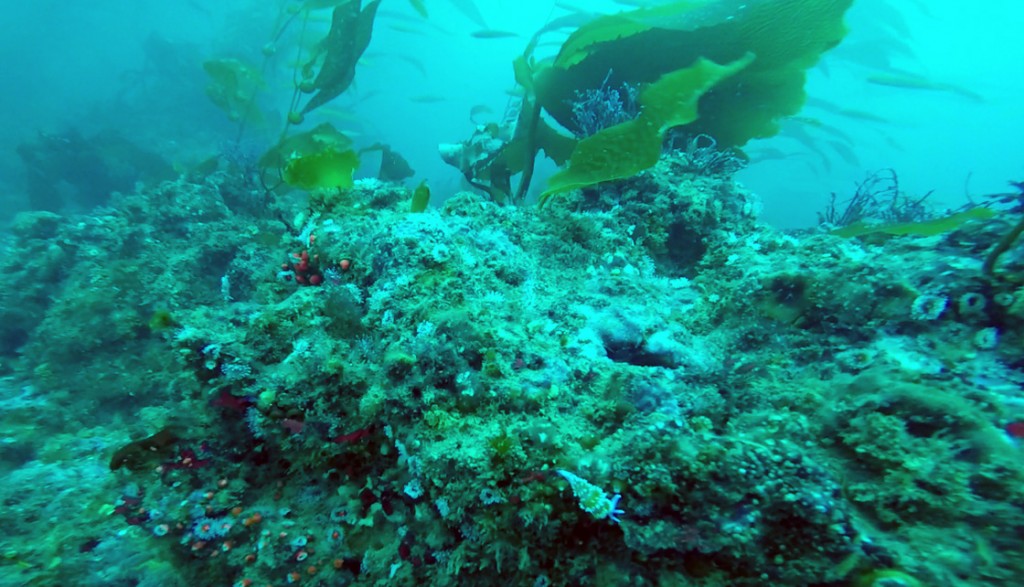
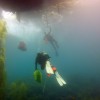

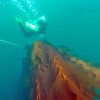


Well, Pike, you tried the rest and finally dived the best. CINP is the Queen of the underwater aspects for any national park. Glad the weather gods played nice. We have had some survey trips that looked like the opening scenes from Victory at Sea, and always with an eye towards safety, we still gathered submerged cultural resource data.
Carry on.
Dive safe.
Patrick Smith
CMAR
SOME OF THE PICTURES OF KELP ARE FASCINATING. IT LOOKS ALMOST LIKE A BOUQUET OF FLOWERS.
IT IS JUST ONE EXAMPLE OF THE DIVERSITY IN THE OCEAN.
I AM HAPPY FOR YOU THAT YOU CAN ADMIRE GOD’S HANDIWORK EVEN IN THE DEEP.
ABA
great post, Pike (I especially appreciate the phrase “plethora of nudibranchs” and the last picture). it seems like what you’re doing is extremely important, so thanks for doing it.